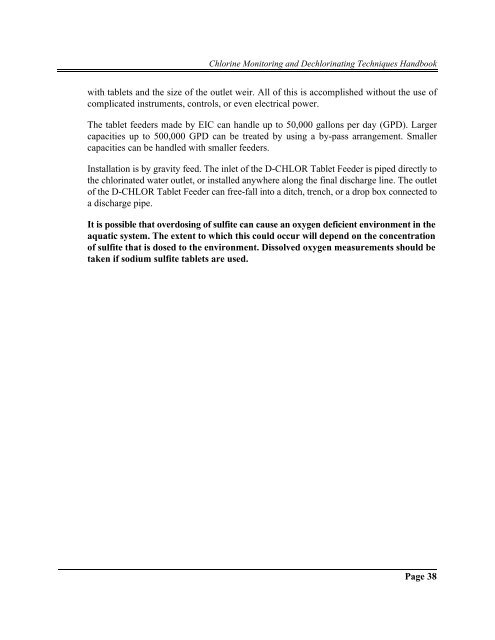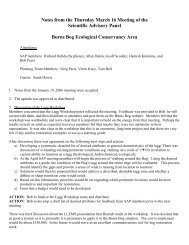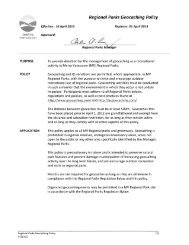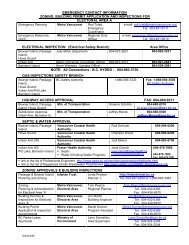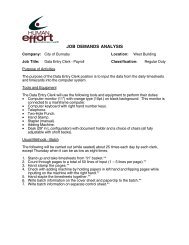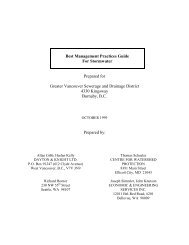Chlorine Monitoring and Dechlorination Techniques Handbook
Chlorine Monitoring and Dechlorination Techniques Handbook
Chlorine Monitoring and Dechlorination Techniques Handbook
Create successful ePaper yourself
Turn your PDF publications into a flip-book with our unique Google optimized e-Paper software.
<strong>Chlorine</strong> <strong>Monitoring</strong> <strong>and</strong> Dechlorinating <strong>Techniques</strong> H<strong>and</strong>book<br />
with tablets <strong>and</strong> the size of the outlet weir. All of this is accomplished without the use of<br />
complicated instruments, controls, or even electrical power.<br />
The tablet feeders made by EIC can h<strong>and</strong>le up to 50,000 gallons per day (GPD). Larger<br />
capacities up to 500,000 GPD can be treated by using a by-pass arrangement. Smaller<br />
capacities can be h<strong>and</strong>led with smaller feeders.<br />
Installation is by gravity feed. The inlet of the D-CHLOR Tablet Feeder is piped directly to<br />
the chlorinated water outlet, or installed anywhere along the final discharge line. The outlet<br />
of the D-CHLOR Tablet Feeder can free-fall into a ditch, trench, or a drop box connected to<br />
a discharge pipe.<br />
It is possible that overdosing of sulfite can cause an oxygen deficient environment in the<br />
aquatic system. The extent to which this could occur will depend on the concentration<br />
of sulfite that is dosed to the environment. Dissolved oxygen measurements should be<br />
taken if sodium sulfite tablets are used.<br />
Page 38


